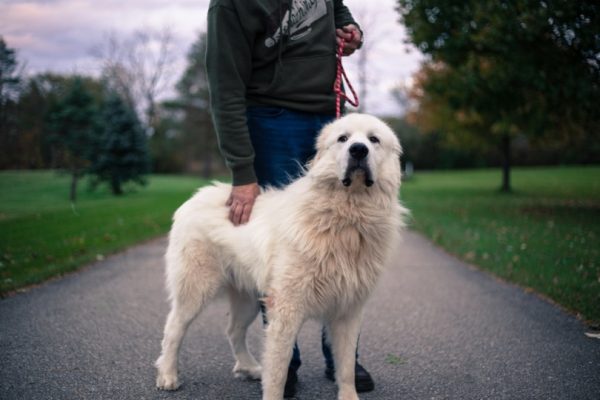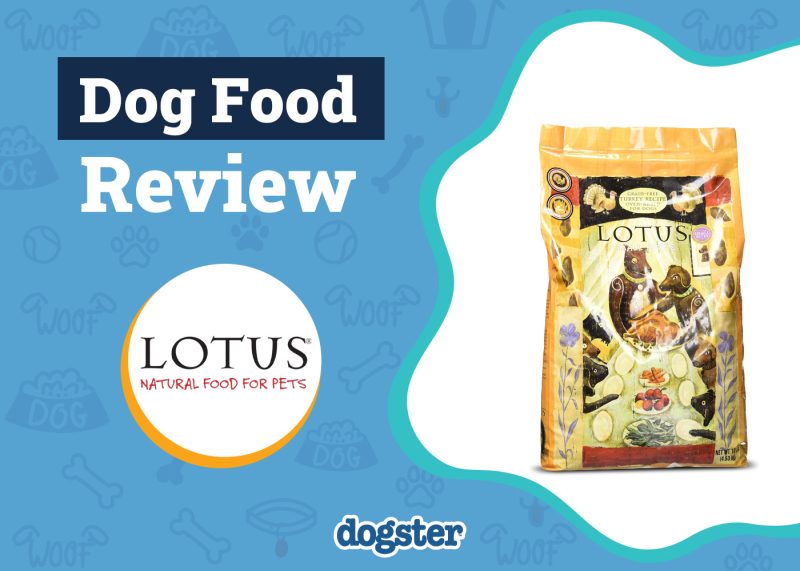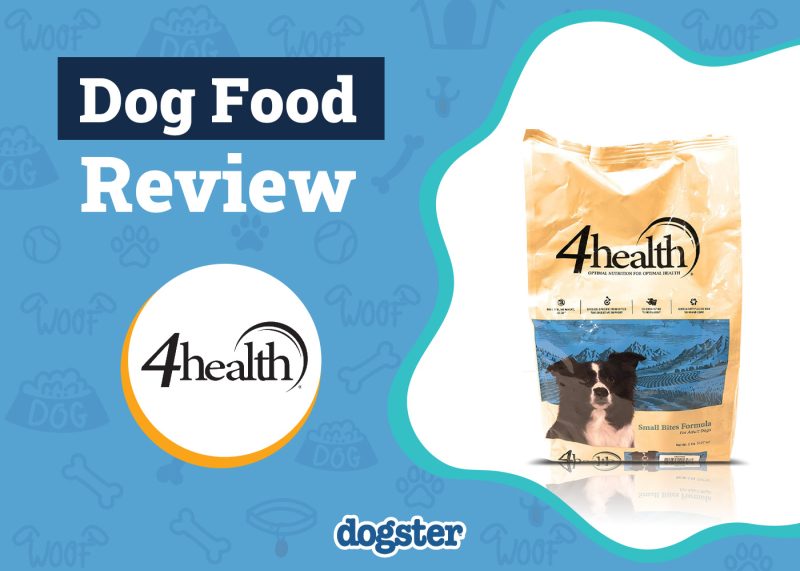First things first, what is a Puggle? The Puggle is a designer dog breed that was first intentionally bred in the 1990s by crossing the Pug and Beagle breeds. As the popularity of designer breeds increased, the Puggle was one of the main benefactors of this newfound love, and potential owners were especially intrigued by this friendly, sociable, lively little dog with a face so cute it is only matched by the breed’s love for their humans.
However, as with any breed, whether it is a purebred or a hybrid, there are pros and cons to owning a Puggle. For a start, you can never be entirely sure whether you will get a dog closer to the Beagle or the Pug, or something that falls right in the middle, which is the ultimate aim when breeding designer dogs.
Below, we look at these Puggle facts that could help you decide whether this is the right breed for your home and family.

The 12 Incredible Puggle Facts
1. The Puggle Is a Designer Dog Breed
A designer dog breed has been “designed” to combine the benefits of both parent dogs. The Labradoodle is perhaps one of the best known, and the Doodle aimed to create a service dog as intelligent and trainable as the Labrador but that had the apparently “hypoallergenic” properties of the Poodle.
In the case of the Pug and Beagle mix, the aim was to create a breed that was loving and fun but less likely to exhibit hound-like qualities, such as the wanderlust of the Beagle parent. However, simply breeding two different breeds does not guarantee that you will get the desirable traits of both parent dogs.
More often than not, you get a mixing pot of characteristics and can never quite be sure what you are going to get.
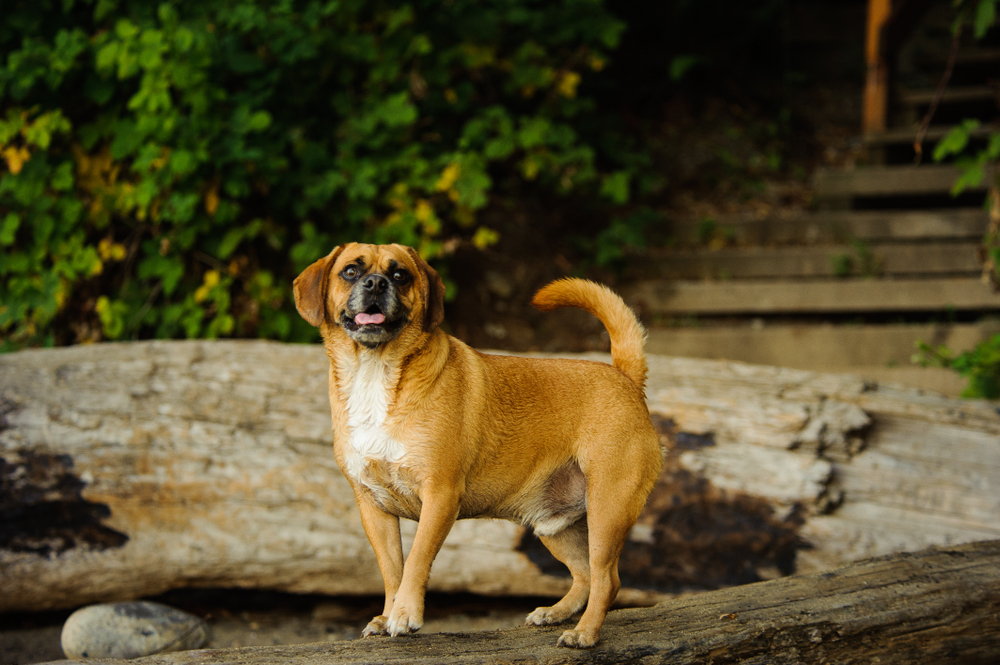
2. They Were First Intentionally Bred in the 1990s
Pugs and Beagles may have naturally bred for centuries. Beagles originate in 19th Century England, whereas Pugs are thousands of years old and the two are similarly sized enough that they could have naturally bred with one another if they came into contact.
However, it was in the 1990s that the two breeds were intentionally bred to create the Puggle dog. The cross was first created in the U.S., and it soon became a very popular option with potential dog owners here and around the world.
3. In 2005, Puggles Were the Most Widely Owned of All Designer Breeds
In fact, such was the popularity of the Pug and Beagle mix that it became the most widely owned of all designer breeds. The breed’s popularity likely stems from their size. These dogs are small enough that they can easily live in an apartment and are generally easy to handle.
They’re also described as loving and friendly dogs that will generally be at home cuddled up on the sofa with their owner, although they do tend to be quite lively dogs. As such, they can be a good option for owners that want an energetic little pup that is willing to play and provides them with daily exercise.
They also have the adorable look of the Pug’s face and the attractive body of the Beagle.
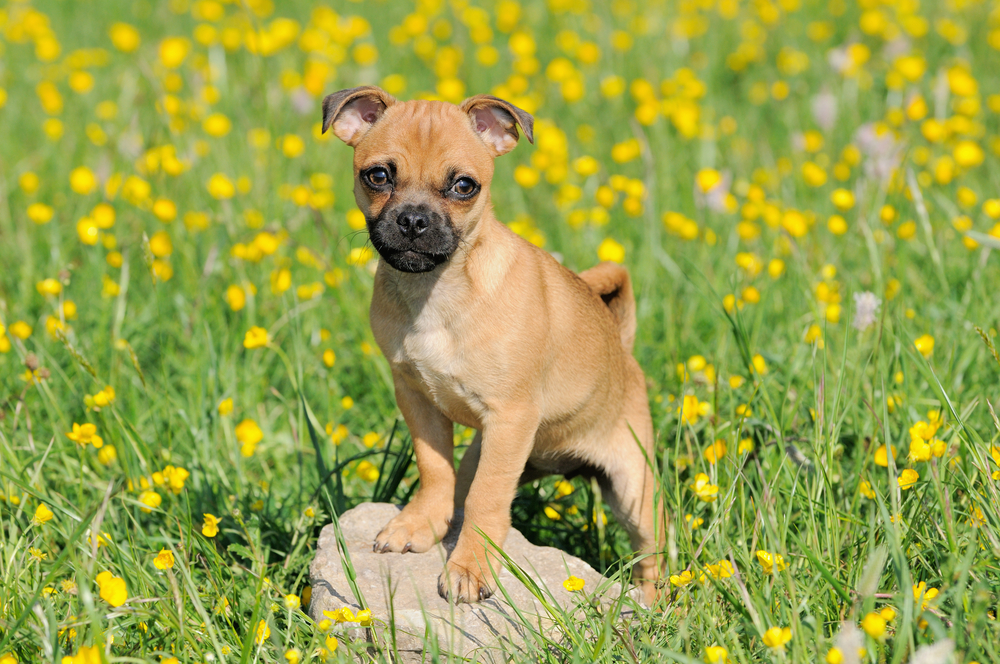
4. They Can Be Expensive
Generally, purebred dogs cost considerably more than crosses and mutts. Anything that is recognized by the American Kennel Club or other international clubs will attract a higher price tag. However, there are exceptions to this rule, and the Puggle is one such exception.
As a result of its incredible popularity with prospective owners, Puggles can cost as much as some purebred dogs, and this price increase may put some potential owners off. It is possible to find Puggles in shelters, and adopting a dog means you not only provide them with a loving home but you free up space for another dog in need of help. Adopting costs are typically lower than purchase costs.
5. Puggles Tend to Be Friendly and Sociable
Beagles and Pugs are both amiable little dogs, so it isn’t surprising that the resulting Puggle hybrid is also said to be a friendly dog. These dogs are considered sociable and will get along with other dogs as well as family and strangers.
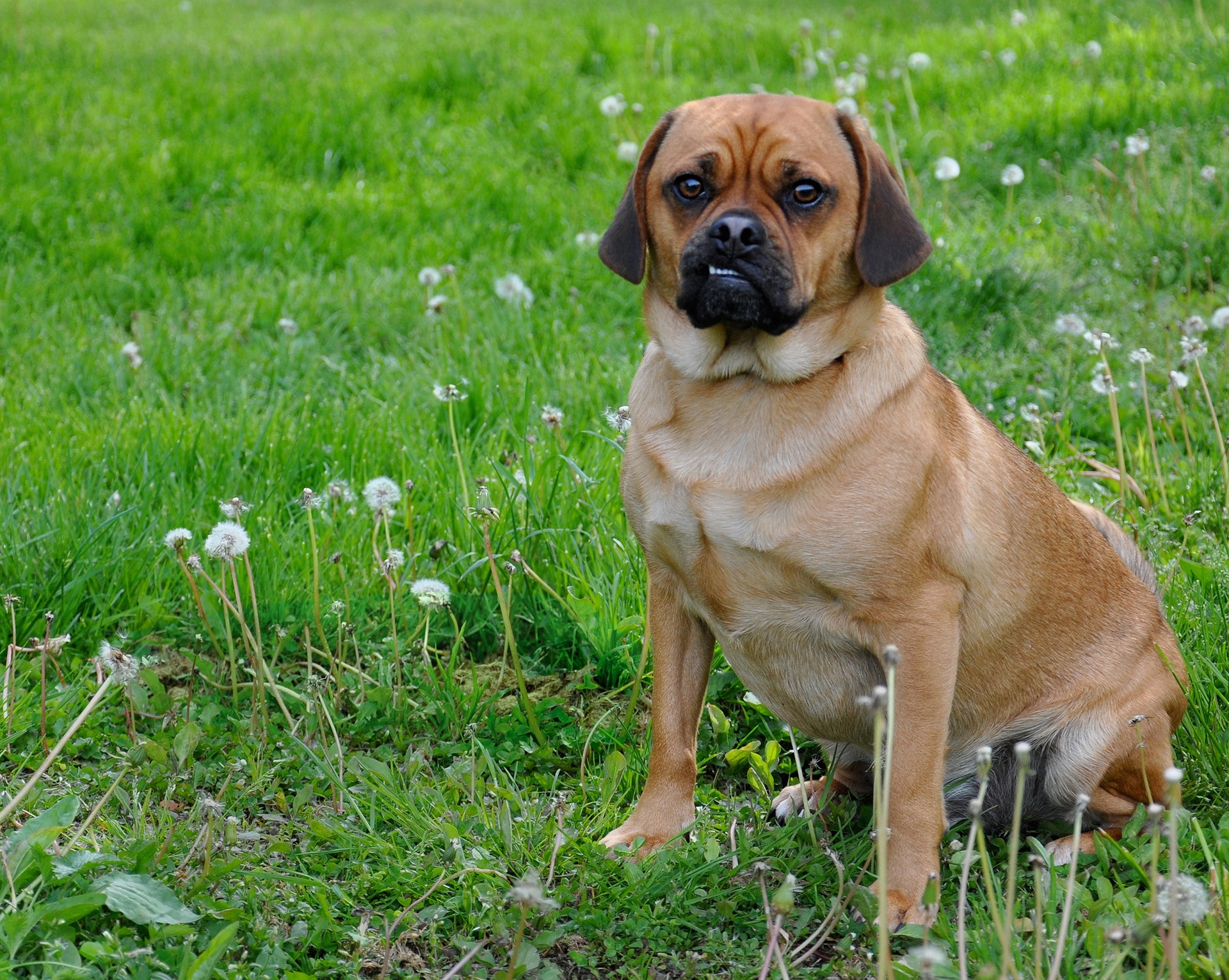
6. They Can Have a Very Stubborn Streak
While it can be difficult to predict exactly what characteristics a Puggle will have, one anecdotal trait that you should expect to experience from this hybrid is stubbornness.
People theorize that these claims of stubbornness are due to the breeds involved in the cross and their respective temperaments. Pugs are used to getting their own way and basically doing whatever they like, which gives them a stubborn streak. The Beagle, on the other hand, is independent because they were originally bred and used to chase down small animals. This independent streak can also lead to stubbornness.
However, do note that these claims are mostly anecdotal; it is definitely possible that you’ll adopt an easy-going, obedient, and well-mannered Puggle.
7. Puggles Are Moderately High Shedders
Another trait you should expect from your Puggle is that they will likely have moderate to high levels of shedding. Most dogs shed, with mild shedding throughout the year, and two periods of heavy shedding in fall and spring (in temperate environments). Beagles have a double coat, while most Pugs (except some black Pugs) also possess a double coat.
Dogs shed their undercoats (if they are double coated) during these times to get rid of one undercoat and replace it with a coat more appropriate for the upcoming weather conditions. Although the Puggle has a short coat, you should expect them to lose a lot of hair throughout the year, especially during those prominent shedding periods.

8. They Are Easy to Groom
To help manage shedding and prevent too much fur from getting onto furniture, on clothes, and up noses, you should brush the coat regularly. This removes dead hairs, and it also helps spread natural oils through the coat which helps keep their skin healthy.
Regular brushing is important for all breeds, even the Puggle. But the short coat of the Puggle means that it is easy to maintain. Brush the coat a few minutes every day or give a slightly longer brush two or three times a week for the best results.
9. Puggles Are Loud Snorers…and Breathers
The Puggle adopts the brachycephalic facial features of the Pug. This means that the face is squat and essentially pressed up. It’s what gives the Pug their unique look, but the squashed nose also means that Pugs can make some very unusual noises.
Puggles, like Pugs, are prone to snoring. And they sound like they’re snoring even when they’re awake. If you’re hoping for a silent dog, the Puggle is likely not it. That being said, a Puggle has fewer brachycephalic features than a Pug, partly because the cross with a Beagle results in a somewhat longer snout than that of a purebred Pug.
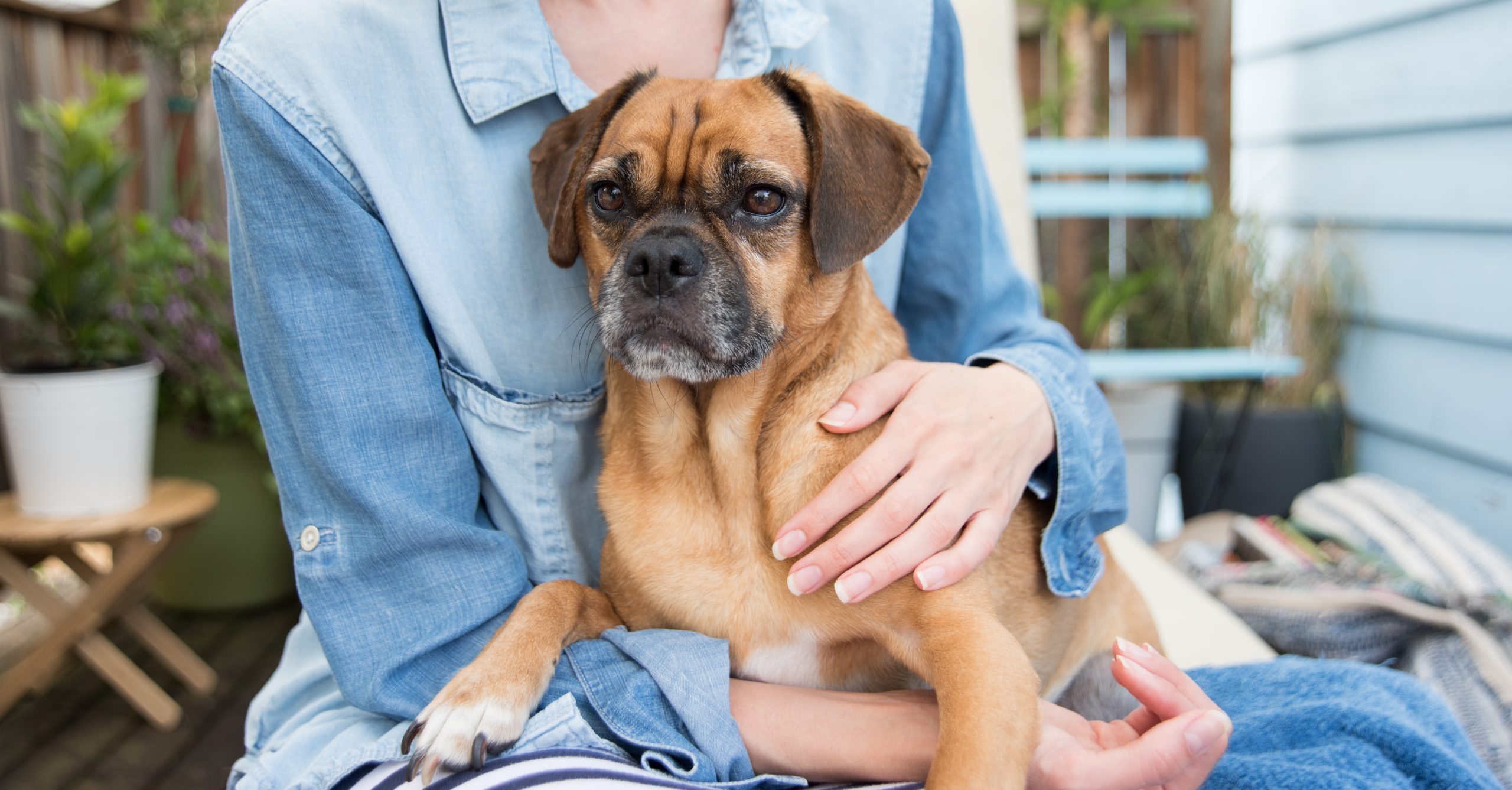
10. Their Facial Features Make Them Somewhat Prone to Illness
Those brachycephalic features do make breathing more difficult for the Puggle. As well as potentially causing snoring and louder breathing, it can lead to some health concerns and illnesses.
Puggles are prone to breathing difficulties and their bulging eyes mean they can also suffer eye problems. Some Puggle puppies need operations to help manage the facial features and to ensure they don’t cause too many problems for the pup.
Once again, the extremity of brachycephalic issues in the Puggle is less than those in the Pug (but notably more than those in the Beagle).
11. Puggles Are Active Little Dogs
Pugs are fun and Beagles were bred to chase wild game. This combination means that, although the breed is small, you will be getting a lively and active little canine companion that enjoys walks and also enjoys playing active games in the house as well as out of it.
Expect to provide a minimum of 45–60 minutes of exercise every day, which can come in the form of regular walks as well as active playtime. The Puggle can do well in agility if you can overcome that alleged stubborn streak enough to be able to train them, and if you can convince the Beagle not to want to run away whenever they are let off the leash.
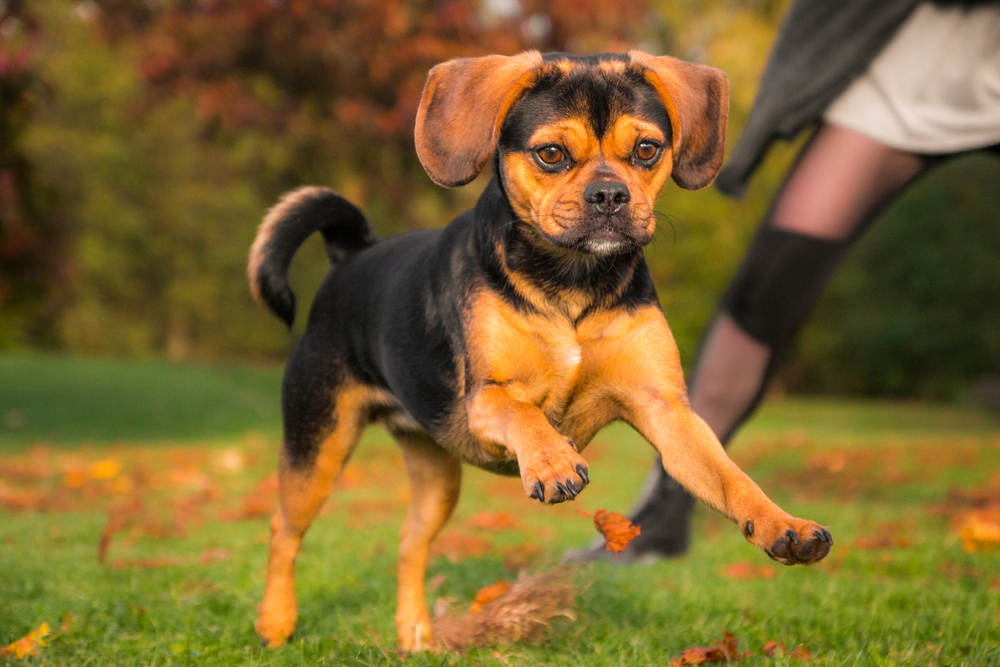
12. You Can’t Be Entirely Sure of What You’re Going to Get
Designer dog breeds aim to enjoy the best features and traits of both parent breeds, but it can take generation after generation of intentional breeding and back breeding to develop desirable traits and discourage undesirable ones.
Even though the Puggle breed was introduced in the 1990s, there is no guarantee that you’re getting a fourth-, third-, or even second-generation Puggle. Yours could be a direct descendant of a Beagle and Pug, and this means that you can never quite be sure what characteristics the puppy will inherit from which parent breed.
Puggles are not recognized by any official dog registry and as such, they can come in a variety of colors and appearances. For instance, some might have the curled tail of a Pug, while others might have a tail that resembles that of a Beagle.

Conclusion
The Puggle dog is one of the most popular and commonly owned hybrid dog breeds and was intentionally bred in the 1990s by combining the Pug and the Beagle. It is not officially recognized as a breed as of yet by any notable dog registry.
Although they are generally thought of as being friendly, lively dogs, they are also considered by some to be stubborn and independent. It’s also expensive for a hybrid breed, thanks to their popularity, so if you’re looking for an inexpensive breed, you may need to look elsewhere.
Featured Image Credit: Mary Swift, Shutterstock










